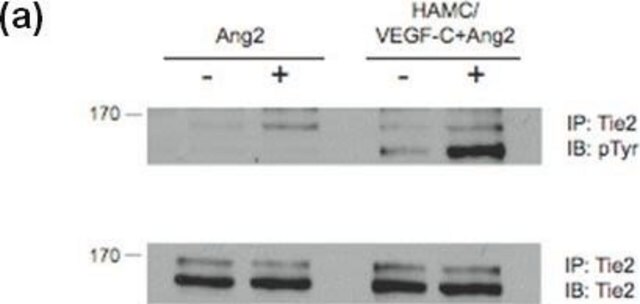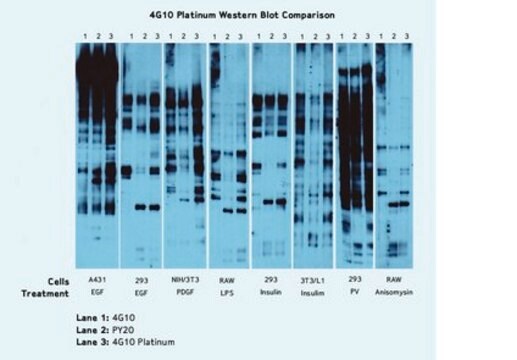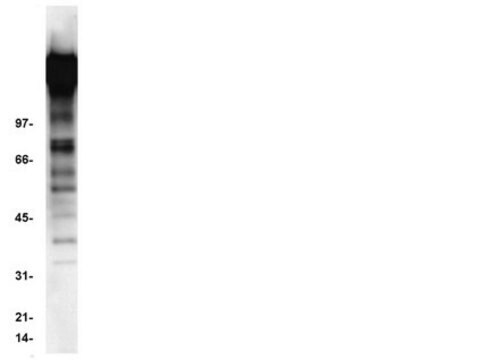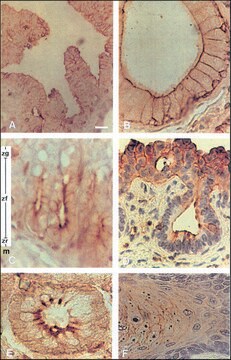16-638
4G10® Platinum, Anti-Phosphotyrosine Antibody, Agarose Conjugate
clone 4G10®, Upstate®, from mouse
Sinonimo/i:
4G10 Platinum Anti-Phosphotyrosine, 4G10 Platinum Antibody, Phosphotyrosine Detection Antibody
About This Item
Prodotti consigliati
Origine biologica
mouse
Livello qualitativo
Tipo di anticorpo
primary antibodies
Clone
4G10®, monoclonal
Reattività contro le specie (prevista in base all’omologia)
all
Produttore/marchio commerciale
Upstate®
tecniche
immunoprecipitation (IP): suitable
Isotipo
IgG2bκ
Condizioni di spedizione
wet ice
modifica post-traduzionali bersaglio
phosphorylation (pTyr)
Informazioni sul gene
human ... PID1(55022)
Descrizione generale
Immunogeno
Applicazioni
Caratteristiche e vantaggi
Qualità
Twenty μl of 50% slurry of this reagent (10 μl packed beads) was used to immunoprecipitate tyrosine-phosphorylated proteins from 250 μg PDGF-stimulated NIH3T3 cell lysate or EGF-stimulated A431 cell lysate.
Descrizione del bersaglio
Stato fisico
Stoccaggio e stabilità
NOTE: DO NOT FREEZE.
Note legali
Non trovi il prodotto giusto?
Prova il nostro Motore di ricerca dei prodotti.
Codice della classe di stoccaggio
10 - Combustible liquids
Classe di pericolosità dell'acqua (WGK)
WGK 2
Certificati d'analisi (COA)
Cerca il Certificati d'analisi (COA) digitando il numero di lotto/batch corrispondente. I numeri di lotto o di batch sono stampati sull'etichetta dei prodotti dopo la parola ‘Lotto’ o ‘Batch’.
Possiedi già questo prodotto?
I documenti relativi ai prodotti acquistati recentemente sono disponibili nell’Archivio dei documenti.
Il team dei nostri ricercatori vanta grande esperienza in tutte le aree della ricerca quali Life Science, scienza dei materiali, sintesi chimica, cromatografia, discipline analitiche, ecc..
Contatta l'Assistenza Tecnica.







